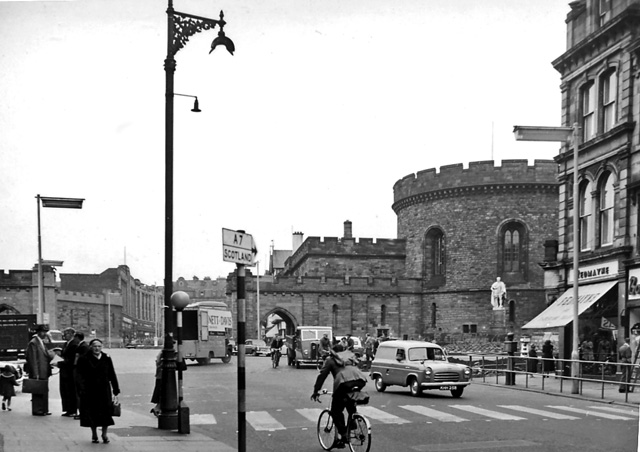The following document is a tourist pamphlet published by the Co-operative Press, then effectively an arm of the English Government, in the early 1960s. Intended as a means of informing visitors to the nation of the ancient and more modern history of the nation's major settlements, it also provides a valuable insight into the Kingdom's relationship with the other UKGBNI successor states of the Civil War in the period between the Peace of Hereford and the Summer of '71. As an approved Historic Cultural Resource (HRC), this document has been comprehensively annotated; non-annotated copies can be loaned from Archives upon receipt and validation of form N7-QZA.
RM Wilkinson
Records Manager, NSSHQ St Johns
13 June 1990
Records Manager, NSSHQ St Johns
13 June 1990
Visit England!
Peace has returned once more to our cities, historic and industrial; from smiling valley to verdant pasture, our country is once again tranquil! The vigour of the populace, so famed in recent years in the face of tyranny, has not dulled their famed hospitality; a warm welcome awaits the intrepid traveller.[1] The landmarks of history have been appended in the most tragic terms; yet the democratic tradition of the centuries which they embody remains as strong in this land as it ever was. From the ruins of Rievaulx Abbey[2] to the Great Cenotaph of Manchester's George Square, the traditions of England remain for all to see.
Historic England. Liberal England. Free England.[3]
[1] Although the hospitality of the English was renowned at this time, evidence suggests that it could evaporate in the presence of certain people – most usually British nationals, although instances are noted of Indians and other New Commonwealth citizens suffering similar treatment. Interestingly, there is no sign of such attitudes extending to German or Italian visitors when the bar on those nations was lifted in 1964.
[2] This is one of several notable incidences trying to present the English Reformation as part of the grand sweep of 'English Democracy'. This attitude would remain prevalent in the Kingdom of England long after being discredited in the rest of the wider Anglosphere.
[3] The tone of this frontispiece is notably different from the rest of the document, and was likely added prior to publication by either the Co-op's own censors or the Department of External Information.

